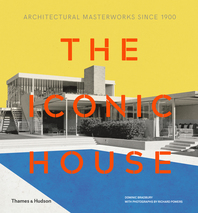Aspen, Colorado
In an area of intense development overlooking the Aspen Valley, where many 20,000-square-feet-plus houses are built, the site for this house is clearly visible from the town of Aspen. The house, at 9,100 square feet, may be half the size of its neighbors, but its still a large structure, and the architect’s goal was to keep it camouflaged from all vantage points.
Design concept and solution: Minimizing the visual impact of the structure was the idea, and to accomplish that the architect used four separate stealth strategies. The first of these was to minimize the apparent massing, which is curved and cut back in such a way that the outline is broken up and the true size of the house hidden from all angles. The second strategy was to keep the roof as low as possible. A simple mono-pitch was chosen and developed to minimize the apparent height of the structure. This roof has deep overhangs that shade the glass, so there is no tell-tale glare and the glass appears invisible. The third strategy was to bury the house into the hillside and allow a line of existing trees to remain between the house and the view. Finally, copper, Cor-ten steel, and dark brown stucco were chosen to lower the “visual temperature” of the house and to keep it in the background visibly. This works both in summer and winter. Rock-faced retaining walls, which appear a bit jarring at present, match the site stone and will soon be covered with vines to further diminish the house’s appearance.
The principal rooms of the house open south to the view and are bathed in natural light. Skylights and large areas of wind-protected glazing with wide overhangs fill the house with light. The structure curves around in a gentle arc that orients each room to a specifically chosen view. Everything has been designed to be as simple as possible. Perhaps the most radical aspect of the project is the entry. As you approach the house by car, all that is visible is the ovoid-shaped garage/studio building. The garage door is clad in the same laminated copper as the rest of the building, so it is completely integrated within the entry facade. Behind the garage, the driveway curves around under a porte cochere linked to the house. This arrangement minimizes the intrusion of the car into this sensitive site.
The house was designed to meet Pitkin County, Colorado’s strict environmental and energy codes and to help offset the tremendous negative visual impact that “building as usual” is having on this beautiful former wilderness area.
Total construction cost:
Withheld at owner's request
PeopleOwner: Withheld at owner's request Completion Date: July 2010 Gross square footage: 9100 sq.ft.
Architect Personnel in architect's firm who should receive special credit: Walter Chatham FAIA Interior designer: Joyce Wirth/Weiss and Wirth Interiors
Engineer(s)
Consultant(s)
Lighting:
Other: General contractor: Harriman Construction Company www.harrimanconstruction.com
Photographer |
ProductsStructural system: Steel and wood
Exterior cladding
Windows
Glazing
Doors
Hardware
Interior finishes
Wallcoverings:
Conveyance |























